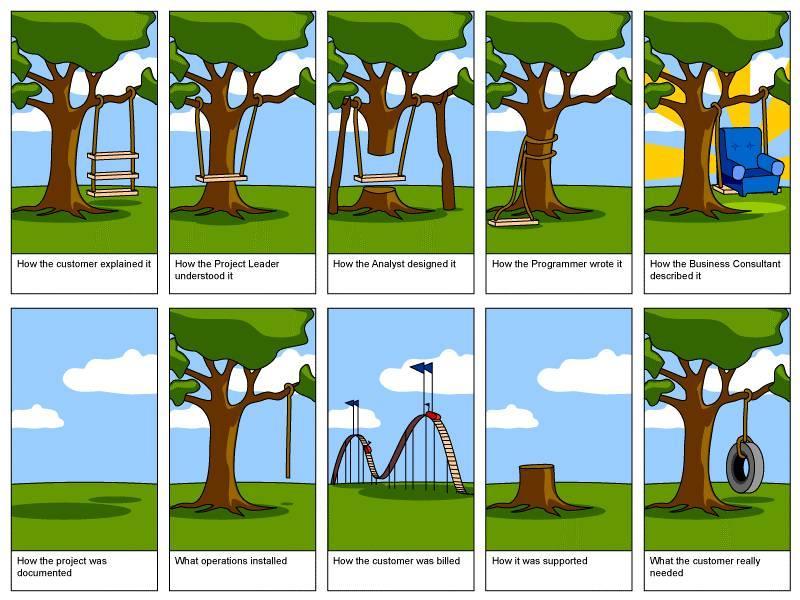Chapter 6: Project Initiation
Learning Objectives
- Identify the activities required to initiate a project.
- Write project objectives – SMART.
- Discuss the purpose of the project charter.
- Design a project charter.
The project initiation phase is the first phase within the project management life cycle, as it involves starting up a new project. Within the initiation phase, the business problem or opportunity is identified, a solution is defined, a project is formed, and a project team is appointed to build and deliver the solution to the customer. A business case is created to define the problem or opportunity in detail and identify a preferred solution for implementation. The business case includes:
A detailed description of the problem or opportunity with headings such as Introduction, Business Objectives, Problem/Opportunity Statement, Assumptions, and Constraints
- A list of the alternative solutions available
- An analysis of the business benefits, costs, risks, and issues
- A description of the preferred solution
- Main project requirements
- A summarized plan for implementation that includes a schedule and financial analysis.
The project sponsor then approves the business case, and the required funding is allocated to proceed with a feasibility study. It is up to the project sponsor to determine if the project is worth undertaking and whether the project will be profitable to the organization. The completion and approval of the feasibility study triggers the beginning of the planning phase. The feasibility study may also show that the project is not worth pursuing and the project is terminated; thus the next phase never begins.
All projects are created for a reason. Someone identifies a need or an opportunity and devises a project to address that need. How well the project ultimately addresses that need defines the project’s success or failure.
The success of your project depends on the clarity and accuracy of your business case and whether people believe they can achieve it. Whenever you consider past experience, your business case is more realistic; and whenever you involve other people in the business case’s development, you encourage their commitment to achieving it.
Often the pressure to get results encourages people to go right into identifying possible solutions without fully understanding the need or what the project is trying to accomplish. This strategy can create a lot of immediate activity, but it also creates significant chances for waste and mistakes if the wrong need is addressed. One of the best ways to gain approval for a project is to clearly identify the project’s objectives and describe the need or opportunity for which the project will provide a solution. For most of us, being misunderstood is a common occurrence, something that happens on a daily basis. At the restaurant, the waiter brings us our dinner and we note that the baked potato is filled with sour cream, even though we expressly requested “no sour cream.” Projects are filled with misunderstandings between customers and project staff. What the customer ordered (or more accurately what they think they ordered) is often not what they get. The cliché is “I know that’s what I said, but it’s not what I meant.” Figure 6.1 demonstrates the importance of establishing clear objectives.
The need for establishing clear project objectives cannot be overstated. An objective or goal lacks clarity if, when shown to five people, it is interpreted in multiple ways. Ideally, if an objective is clear, you can show it to five people who, after reviewing it, hold a single view about its meaning. The best way to make an objective clear is to state it in such a way that it can be verified. Building in ways to measure achievement can do this. It is important to provide quantifiable definitions to qualitative terms. [1]

To ensure the project’s objectives are achievable and realistic, they must be determined jointly by managers and those who perform the work. Realism is introduced because the people who will do the work have a good sense of what it takes to accomplish a particular task. In addition, this process assures some level of commitment on all sides: management expresses its commitment to support the work effort and workers demonstrate their willingness to do the work.
Imagine an office manager has contracted a painter to paint his office. His goal or objective is to have the office painted a pleasing blue color. Consider the conversation that occurs in Figure 6.2[2] after the job was finished.

This conversation captures in a nutshell the essence of a major source of misunderstandings on projects: the importance of setting clear objectives. The office manager’s description of how he wanted the room painted meant one thing to him and another to the painter. As a consequence, the room was not painted to the office manager’s satisfaction. Had his objective been more clearly defined, he probably would have had what he wanted. Keep the following in mind:
- Less is more
- Avoid technical jargon or acronyms
- Create SMART objects (See below)
- Make the objectives controllable
- Be sure all relevant parties agree on the project’s objective
Project Charter
A project charter, project definition, or project statement is a statement of the scope, objectives, and participants in a project. It provides a preliminary delineation of roles and responsibilities, outlines the project objectives, identifies the main stakeholders, and defines the authority of the project manager. It serves as a reference of authority for the future of the project.
Purpose of the Project Charter
The purpose of a project charter is to:
- Provide an understanding of the project, the reason it is being conducted, and its justification
- Establish early on in the project the general scope
- Establish the project manager and his or her authority level. A note of who will review and approve the project charter must be included.
Simple example of Project Charter
| Front Page: | |||||||||||||||
| Identification Section
List the project name, the date of the current version of the project charter, the sponsor’s name and authority, and the project manager’s name. Example: Project Name: JIBC Computer Store Creation Project Sponsor: Jane Epp, Facilities Manager Date: Jan 12, 2016 Revision: 1 Project Manager: Monica Styles |
|||||||||||||||
| Record of Amendment – | |||||||||||||||
| Facilitate change management and revisions
Example: |
|||||||||||||||
|
Overview of the Project |
|||||||||||||||
| Provide a simple but precise statement of the project.
Example: JIBC is planning to create a store to sell computer supplies. |
|||||||||||||||
| Objectives | |||||||||||||||
| State the objectives of the project clearly and ensure they contain a measure of how to assess whether they have been achieved. The statement should be realistic and should follow the SMART protocol:
Specific (get into the details) Measurable (use quantitative language so that you know when you are finished) Acceptable (to stakeholders) Realistic (given project constraints) Time based (deadlines, not durations) Example: The objective of this project is to implement a campus store that is ready to sell computer supplies such as memory sticks, mouse pads, and cables, when class starts in August 2017, with enough inventory to last through the first two weeks of classes. |
|||||||||||||||
| Scope | |||||||||||||||
| Specify the scope of the project by identifying the domain or range of requirements.
Example:
It is equally important to include in the scope what is not included in the project. Example: The scope of the project does not include: Development of any other institute store Store design or construction |
|||||||||||||||
| Major Milestones | |||||||||||||||
| List all major milestones needed to ensure project completion successfully.
Example:
|
|||||||||||||||
| Major Deliverables | |||||||||||||||
| List and describe the major deliverables that will result from the project.
Example:
|
|||||||||||||||
| Assumptions | |||||||||||||||
| Outline the assumptions made in creating the project. An assumption is a fact you are unsure of but can either confirm at a later time or are simply stating so that the project can proceed as if the statement were true.
Example:
|
|||||||||||||||
| Constraints | |||||||||||||||
| Define any and all constraints on the project or those working on the project. This is an important part of the project charter. A constraint is anything that limits the range of solutions or approaches.
Example:
|
|||||||||||||||
| Business Need or Opportunity (Benefits) | |||||||||||||||
| Provide a concise statement of the business need or opportunity that led to the creation of the project. Why was it created? What are the benefits? How does the project contribute to organizational objectives?
Example: The goal of this project is to provide income for the JIBC Student Support Center while supplying necessary items to students and faculty at competitive prices. The institute’s store will be a convenience to students since necessary supplies will be available on campus. This will help students learn to manage their personal supplies. |
|||||||||||||||
| Preliminary Cost for the Project (Budget) | |||||||||||||||
| Provide a statement indicating how the cost of the project will be defined and controlled.
Example: The procurement team will assemble a proposal based on expected costs for review by the Dean of Student Services. |
|||||||||||||||
|
Project Risks |
|||||||||||||||
|
A risk is anything uncertain that may occur that will reduce or decrease the chances of project success. Example: 1. There is a provincial election coming and the new government may change the taxation rules for institutes/colleges/ university retail outlets. 2. The cloud is changing student demand for media such as flash drives in somewhat unpredictable ways. If this happens faster than we forecast, we may be building a store that students don’t need. 3. Deliveries of store shelves, etc. will be delayed if a major hurricane occurs. |
|||||||||||||||
|
Project Charter Acceptance |
|||||||||||||||
|
Provide the names, titles, and signature lines of the individuals who will sign off on the project charter.
|
|||||||||||||||
|
Project Stakeholders |
|||||||||||||||
|
Provide a summary of the key stakeholders and team members by function, name, and role.
|
|||||||||||||||
|
Approval |
|||||||||||||||
|
Name Project Leader……………………………………Date…………………………………………….. Sponsor ……………………………………………………..Date……………………………………………..
|
|||||||||||||||
|
|
|||||||||||||||
The project initiation phase addresses the following questions:
- Why are we doing this project? (Purpose).
- What organization level goals and objectives does this project support? (Alignment).
- How does the project fit with other projects that are going on?
- What is the expected benefit from the project (Value)?
- What are we going to do? (Scope)?
- How are we going to do it? (Strategy)?
- Who is affected by this and who must be involved? (Stakeholders)?
- How do we obtaining approval? (Project Charter)?
- How will we know when we are done and successful? (Success Criteria)?
Key Takeaways
- Objectives provide quantifiable definitions to qualitative terms. Objectives must follow the SMART principles. Objectives must be:
- Clear – no ambiguity
- Stated in a way that can be verified
- Stated in ways to measure achievements
- Project charter is a document that officially sanctions the project or it’s a mandate for action. It spells out in writing the nature and scope of the work and the sponsor’s expectations for results. It is a critical tool used by the project manager.
- The project initiation phase addresses nine key questions.
Attribution
This chapter is based on chapter 7 in Project Management by Adrienne Watt.
Project Management by Adrienne Watt CC BY 4.0 is a derivative the following texts:
This chapter of Project Management is a derivative of the following works:
- FIgure 6.1 Project Management by Andreas Cappell (https://www.flickr.com/photos/cappellmeister/5921913/) used under CC-BY-NC-SA (https://creativecommons.org/licenses/by-nc-sa/2.0/) ↵
- Figure 6.2: The consequence of not making your objective clear. Illustration from Barron & Barron Project Management for Scientists and Engineers, http://cnx.org/content/col11120/1.4/ ↵

